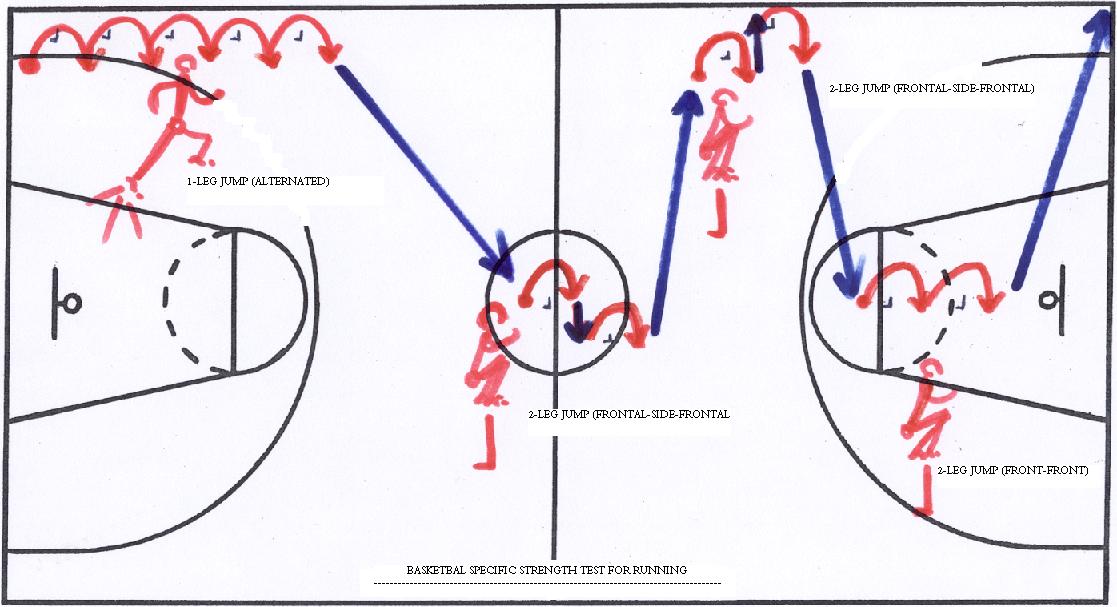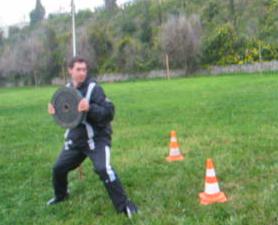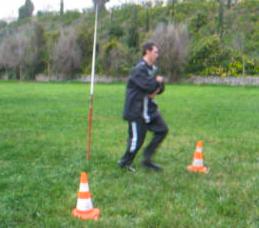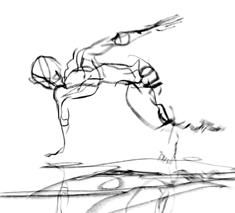| |
ED9
/ cee 2 - ST9 / cet 2 Evaluating
Conditioning Capacities of Basketball Players
LECTURE
Ribera-Nebot,
David (2005). Evaluating Conditioning Capacities of
Basketball Players.
International Basketball Clinic Vilnius. July 8-10th,
2005. Vilnius (Lithuania).
Lithuanian
Basketball Coaches Association
Lithuanian
Basketball Federation
EVALUATING
CONDITIONING CAPACITIES
OF BASKETBALL PLAYERS
David
Ribera-Nebot
Barcelona University
Basketball Coach (Spanish basketball coaches association
-superior coach since 1987-)
Physical conditioning coach of the Spanish under-20 basketball
national team 2002
Introduction
It
was an honour and a great experience to participate in this
Lithuanian Basketball Clinic.
Thank you very much for your attention.
I strongly hope my lecture could provide you practical
proposals for the basketball players you coach.
Feel
free
to contact me: drn@movementsciences.com
All
the proposals are based on practical theories learned from my
best professor Francisco Seirul·lo Vargas.
In the following web page I present his publications on sport
training: http://www.entrenamientodeportivo.org
In the
following web page: http://www.humanmovement.com
you can find an article on practical experiences with
strength tests ("Strength training of the Spanish
basketball team for the 6th European basketball championship
for young men 2002") and soon you will find an article on "Integrated
monitoring of the training load in team sports" and a
selection of articles/video (DVD) on specific endurance tests for basketball
players.
|
|
| |
Lecture Outline
I present a list of the main concepts in order
to have a guide of the examples showed in practice.
Control-Evaluation
Methods (Seirul·lo Vargas, 1994):
a)
Performance assessment by systems
b)
CAPACITY TESTS
c)
Biological controls
d)
Auto-control
e)
Performance observation system
v)
Auto-evaluation
w)
Performance measuring
x)
Objective assessment
y)
External judgement
z)
Performance observation system
|
|
| |
CAPACITY TESTS -Evaluating Conditioning Capacities-
- Use as a main option "auto-control"
and "auto-evaluation" options, specially in experienced
players.
- Create
your own tests of conditioning capacities.
- Adapt
the characteristics of the test to the players.
- With
a clear definition of the test, its criteria to be
implemented and its criteria to be evaluated, it can be
achieved a good degree of validity, objectivity,
reliability and sensibility.
- Selecting
the tests: minimum testing - maximum reliable information.
- Speed
Tests
Perception and cognitive factors are very relevant for
speed actions in basketball, but very complex to be
evaluated. Therefore, speed tests will mainly emphasize the
motor control capacity.
Any basketball skill or drill can be selected for a speed
test.
Specificity and short duration (time to perform a sequence
of basketball actions).
Examples:
- speed
test for running, passing, rebounding, dribbling, short offense or defense actions,
...
- speed
test for a combined sequence of offense or defense
actions
- ...
BUT, the most important is to train in
speed conditions the specific basketball situations !!
In this regard, you can use the different types of speed
proposed by professor Seirul·lo:
Speed of put in action or departure
Spped of intervention
Speed of change of rhythm-timing
Speed of execution
Speed of intermittent actions
- Strength
Tests
- strength
jump tests with different previous movements: from
knew flexion, from standing position, 3 jumps in a
row, with overload (5-20kg), from jumping a hurdle
(20-40-60cm), from a step, from a spin, from a
spin-jump, one-leg jump, one-leg running jump, ...
- strength
running tests: one-leg running half court,
combination of sequences of short runs with
jumping hurdles, ...
- strength
figthing tests: very short movements moving a
10-15-20kg disc (model: 30"effort/15"rest/30"effort/15"rest/30"effort
for 10kg and 30"effort/15"rest/30"effort
for 15kg)
- strength
short-movements test: short forward-backward
movements combined with short defense slides
movements holding a 5-10-15kg disc (model:
30"effort/15"rest/30"effort/15"rest/30"effort
for 5kg and 30"effort/15"rest/30"effort
for 10kg)
- strength
figthing-short-movement tests: combination of
figthing and short movements tests differentiating
interior and exterior players
- strength
throwing tests: throw must be performed with a
minimum of precision (limited zone); throws of 1kg
ball, basketball ball and small basketball ball;
2-hands static, 2-hands with step, 1-hand, over-head
pass, chest passs, ...
-Check
the tests used in a practical experience!
- Endurance
Tests
- Endurance
test for the point guard, forward and center (future
video/DVD).
- Endurance
test for interior and exterior players (3 players
can perform the test at the same time in the
basketball court).
- Player perform the sequence of actions as many
times as possible during every 1'30" effort
period.
- Effort-rest periods: 1'30" effort - 30" rest
/ basic options: 6 or 14 times
(6 periods or 14 periods / 12' or 21' of total
effort)
- Evaluation:
number of actions performed (each period and
total)
recovery heart rate (each rest period and final at
1', 2' and 3') and/or other selected physiological
parameters.
performance index: number of actions/heart rate (each
period and global)
-Check
the sequence of actions and equipment layout
!
|
|
| |
- Strength Test for Running (adaptation of Seirul-lo’s
Test for Handball players): the player must perform one-leg
alternated jumps followed by a combination of runs with 2-leg
jumps on a basketball court. Total and partial times are
evaluated.
FIGURE: Strength Test of Running for Basketball.

-
Strength Tests for “Fighting” Situations (adaptation of
Seirul-lo’s Test for Handball players): a) following a
triangle path (1,80 m. each side) with defense slides and
frontal flexion-extension arms movements with a 15kg disc, the
player has to perform as many meters and arms movements as
possible during 2 sets of 30 seconds (15 seconds rest in
between); b) the same than a) but the player moves a 10kg disc
and performs 3 sets of 30 seconds (15 seconds rest in
between). In both the number of meters and arms movements are
evaluated.
PHOTO (Santi Abad):
Strength Test of Fighting for Basketball.

-
Strength Tests for Short Movements (adaptation of Seirul-lo’s
Test for Handball players): a) following an “L” path (1,80
m. each side) with forward-backward movements and defense
slides holding a 10kg disc, the player has to perform as many
meters as possible during 2 sets of 30 seconds (15 seconds
rest in between); b) the same than a) but the player holds a
5kg disc and performs 3 sets of 30 seconds (15 seconds rest in
between). The number of meters is evaluated.
PHOTO
(Santi Abad): Strength Test of Short Movements for Basketball.

|
|
| |
|
|
| |
©
2005 David Ribera-Nebot ALL RIGHTS RESERVED
www.humanmovement.com

© 2003 movementsciences.org
© 2003 humanmovement.com
|
|
|